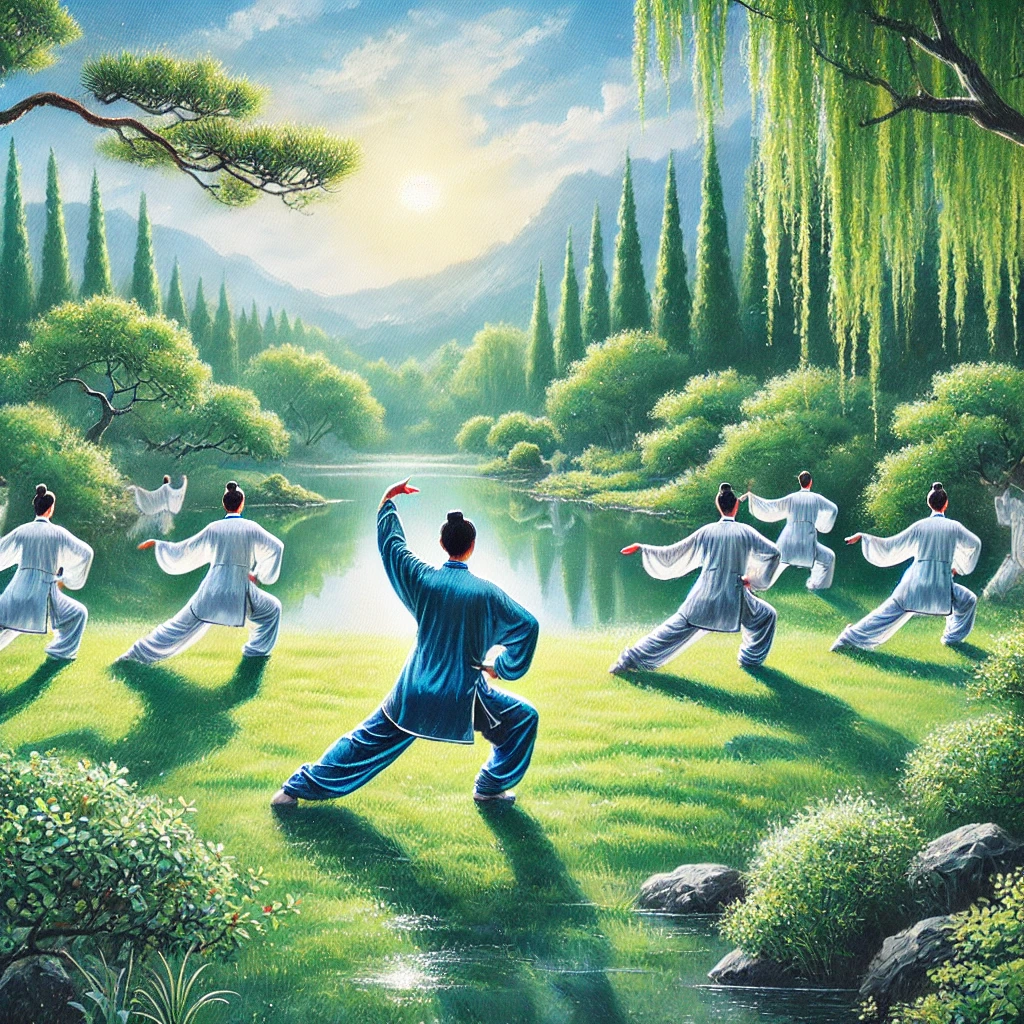Tai Chi, often referred to as Tai Chi Chuan, is an ancient Chinese martial art that has evolved into a holistic practice for health, relaxation, and mental well-being. Its slow, deliberate movements and deep breathing techniques make it accessible to people of all ages and fitness levels. This guide will delve into the history, benefits, and practical aspects of Tai Chi, offering insights into why it has become a global phenomenon.

Tai Chi is a mind-body exercise that integrates physical movement, mental focus, and controlled breathing. Originating from ancient China, it was initially practiced as a martial art but has transitioned into a health-focused exercise in modern times. The term “Tai Chi” translates to “Grand Ultimate,” symbolizing balance and harmony between opposing forces, such as yin and yang.
The History of Tai Chi
The origins of Tai Chi date back over 1,000 years. It is believed to have been created by Chen Wangting, a retired military officer of the Chen Village in Henan Province. Over the centuries, Tai Chi has branched into various styles, including:
– Chen Style: The oldest form, characterized by its vigorous and fast movements.
– Yang Style: The most popular style, known for its graceful and flowing movements.
– Wu Style: Focuses on subtle, small-circle movements.
– Sun Style: Combines elements of Tai Chi, Xingyiquan, and Baguazhang.
Each style emphasizes a different aspect of the practice but shares the common goal of achieving balance and inner peace.
Health Benefits of Tai Chi
Tai Chi is more than just a physical activity; it’s a holistic practice that benefits the body, mind, and spirit. Here are some key advantages:
1. Improved Physical Health
– Enhances Flexibility: The gentle stretching movements increase joint mobility and muscle elasticity.
– Boosts Strength: Regular practice improves muscle tone, particularly in the legs and core.
– Promotes Balance: The focus on posture and controlled movements reduces the risk of falls, especially in older adults.
2. Mental Well-Being
– Reduces Stress: The meditative aspect of Tai Chi helps calm the mind, reducing stress and anxiety levels.
– Improves Focus: The practice encourages mindfulness, enhancing concentration and mental clarity.
– Promotes Emotional Balance: It fosters a sense of inner peace and emotional stability.
3. Enhanced Cardiovascular Health
Studies suggest that Tai Chi can lower blood pressure, improve heart function, and increase aerobic capacity, making it beneficial for cardiovascular health.
4. Better Respiratory Function
The deep breathing techniques used in Tai Chi improve lung capacity and oxygen circulation, supporting overall respiratory health.
Tai Chi and Traditional Chinese Medicine (TCM)
Tai Chi aligns closely with the principles of Traditional Chinese Medicine, focusing on the flow of Qi (life energy) within the body. According to TCM, practicing Tai Chi helps:
– Unblock meridians for better Qi flow.
– Balance yin and yang energies.
– Enhance the body’s self-healing mechanisms.

Getting Started with Tai Chi
1. Choose a Style
Identify a Tai Chi style that aligns with your goals. Beginners often start with Yang style due to its simplicity and accessibility.
2. Find a Qualified Instructor
Learning from a certified Tai Chi instructor ensures you practice the movements correctly and safely.
3. Create a Practice Space
Find a quiet, open space where you can move freely without distractions. A park or a garden is ideal.
4. Wear Comfortable Clothing
Opt for loose-fitting clothes that allow unrestricted movement. Flat-soled shoes are recommended for proper balance.
5. Start Slow
Begin with basic forms and gradually progress to more complex sequences. Focus on mastering one movement at a time.
Tai Chi for Different Age Groups
1. Children and Teens
Tai Chi helps younger individuals improve concentration, reduce stress, and develop coordination.
2. Adults
For adults, Tai Chi offers a way to stay active, relieve stress, and improve overall fitness.
3. Seniors
Older adults benefit greatly from Tai Chi’s focus on balance and flexibility, which helps prevent falls and enhances mobility.
Incorporating Tai Chi into Daily Life
Consistency is key to reaping the benefits of Tai Chi. Here are some tips:
– Morning Practice: Start your day with a 20-minute Tai Chi session to boost energy and focus.
– Lunchtime Break: A short session during lunch can alleviate midday stress.
– Evening Routine: Practice Tai Chi in the evening to unwind and prepare for a restful sleep.

Tai Chi in Modern Culture
Tai Chi’s popularity has transcended cultural boundaries. It is practiced worldwide in community centers, schools, and even corporate settings. Many companies offer Tai Chi sessions to employees as part of wellness programs.
Frequently Asked Questions
1. Is Tai Chi suitable for beginners?
Yes, Tai Chi is beginner-friendly and can be adapted to individual fitness levels.
2. How long does it take to learn Tai Chi?
The learning process varies. Basic movements can be learned in weeks, but mastering the art can take years.
3. Can Tai Chi help with chronic conditions?
Research shows that Tai Chi can benefit individuals with arthritis, diabetes, and other chronic conditions by improving mobility and reducing pain.
Conclusion
Tai Chi is a timeless practice that bridges the gap between physical fitness and mental wellness. Its gentle movements, combined with a focus on mindfulness, make it an ideal exercise for people of all ages. Whether you seek stress relief, improved health, or a meditative practice, Tai Chi offers a pathway to a balanced and harmonious life. Embrace the art of Tai Chi and experience the profound benefits it can bring to your body, mind, and spirit.
